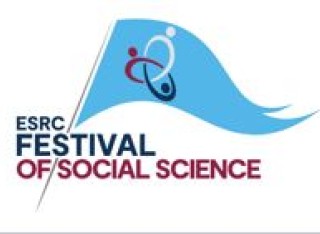
Dr Brigitte Stangl
About
Biography
Brigitte Stangl holds a doctorate (August 2010) and two masters degrees (2006, 2007) from the Vienna University of Economics and Business (WU Vienna). During her studies, she specialised in Tourism & Leisure Studies and Small Business & Entrepreneurship.
Between 2006 and 2010, she undertook duties as a Research and Teaching Assistant at the Institute for Tourism and Leisure Studies, WU Vienna. From November 2010 to March 2012, she worked as a Project Manager at the Institute for Tourism & Leisure Research, HTW Chur, Switzerland.
In May 2012, she joined the School of Hospitality & Tourism Management.
Her main research interests are related to e-tourism and lie in the areas of decision support systems, web design, innovative pricing and online distribution. Her research is interdisciplinary, mainly relating to the fields of tourism, marketing, information systems, and psychology. She uses mixed method approaches. In terms of quantitative research, she is dealing with non-trivial data analysis methods such as CBSEM, PLS-SEM, Paired Comparison, or Typology Representing Network Analysis.
Areas of specialism
University roles and responsibilities
- Director of Communication
News
Publications
The impacts of companion animals on human well-being have been receiving increased media and research attention, especially in relation to the COVID-19 pandemic. Previously, there have been calls for research to consider the major components of subjective well-being separately and for research designs to include assessments over time. In line with this suggestion, the purpose of this study was to gain a more comprehensive understanding of how being a dog guardian can impact affect and contribute to the overall assessment of subjective well-being. This study used a seven-day diary design to capture 31 dog guardians’ day-to- day feelings and thoughts during the UK’s first COVID-19 lockdown—an example of a time of considerable stress and crisis. Closed-ended questions examined the impact of dog behavior, feelings toward dogs, participation in dog-related activities, and guardians’ subjective well-being, while open-ended prompts were used to explore guardians’ positive and negative affect. Results suggest that dog guardianship impacted subjective well-being during this time of stress and crisis. Findings indicate that dogs’ behavior, feelings toward dogs, and participation in dog-related activities impacted the overall day-to- day subjective well-being of guardians. Additionally, six themes emerged related to positive and negative affect: amusement, joy, calm, frustration, worry, and guilt. These positive and negative affect findings help to explain some of the previous inconsistencies in pet effect–related research confirming that companion animals do impact subjective well-being. However, the effect is not always positive or consistent, and may be transient. In times of stress and crisis, companion animal guardians can face unique circumstances and could benefit from preparation, guidance, and clear communication about caring for their companion animals.
A multi-stage, multi-method approach using participatory research methodology that considers the perspectives of tourism and hospitality professionals, and academic experts is used to develop an integrated model of transferable skills gained by working in the industry. Grounded in career construction theory, this study is anticipated to provide a comprehensive understanding of essential skills in the tourism and hospitality industry. It also aims to reshape the image of working in the industry into a more positive one, emphasizing the opportunities of the sector not only as a career but also as a steppingstone to learn transferable skills needed in different sectors, and ultimately contribute to the long-term and sustainable development of the tourism and hospitality sector. [Display omitted] •Explore transferable skills crucial in tourism and hospitality via a robust multi-method study.•Illuminate key competencies to transform the image of tourism and hospitality work positively.•Contribute to the long-term vitality of the industry by addressing skill shortages and fostering a positive perception.•Provide a nuanced view of essential skills, informing both professionals and the public alike.
Purpose This research aims to investigate how emerging destinations cope with digitalization of information, where they are in the process and how digitalization of information takes place in destination marketing organizations (DMOs). As a case for emerging destinations that must deal with the negative consequences of the digital divide, the Vietnamese Mekong Delta (VMD) will be examined. A new framework, solutions in general, and potential innovative approaches will be presented. Design/methodology/approach A mixed methods approach was used. Firstly, a content analysis comprising 68 criteria to examine 10 destination websites was conducted to evaluate the performance of provincial destination websites of VMD. Secondly, the authors interviewed five managers from VMD DMOs to reveal the strategy, status quo and their challenges with digitalization. Findings Some digitalization is evident in VMD DMOs, with the digitization of tourist information provision developing from analog formats to digital modes. The content analysis of the websites shows that provincial destination websites of VMD perform well with regard to communication but need improvements for transaction, and especially relationship aspects. Emerging destinations like VMD DMOs are reaching the second or third level in the digitalization process. Yet they face challenges with human and financial resources. Practical implications This research provides recommendations concerning destination website performance, the process of digitalization and how to promote digitalization and apply more digital instruments to move to the next stages of destination digitalization. Also, suggestions on how to overcome existing challenges/barriers in similar areas of the world are provided. Originality/value A new, extended more granulated version of the digitalization framework by Karpova et al. (2019) has been developed. The new model acknowledges the continued importance of printed information, provides information about the sequence of steps how to implement website dimensions, and which instruments are realistic to implement in different levels of digitalization considering the challenges and barriers developing destinations face.
Problematic online usage (POU) and Internet addiction (IA) lack a refined classification. Using 796 questionnaires, this study is the first to reveal a continuum ranging from Casual users (i.e. older users) to Addicts (i.e. digital natives) acknowledging five different severity levels of POU to IA. Depending on where users are located within the addiction continuum, usability of augmented reality (AR) applications has different effects. Most interestingly, the experience of Casual users is triggered by enjoyment, whilst enjoyment exerts a negative effect on the emotional and action experiences of Addicts-in-denial. The study provides actionable implications for IA, POU, and AR behaviour.
This study examined visits to shared outdoor leisure spaces (SOLS) with dogs, such as parks, woodlands, and beaches in the UK. Based on past qualitative and descriptive data, hypotheses and a conceptual model were developed. An online survey of dog guardians (n = 602) was analyzed using partial least square structural equation modeling (PLS-SEM) to test the impacts of human intrinsic motivation; dog well-being; the community benefit; and social bonding on the components of leisure involvement (attraction, centrality, and self-expression), and subsequently intention and visiting behavior in relation to SOLS. The results showed that human intrinsic motivation and community benefit had a positive impact on all aspects of leisure involvement, while dog well-being only affected attraction, and social bonding impacted centrality and self-expression. These findings contribute to a better understanding of dog guardians’ behavior of visiting SOLS in the UK, providing insights for stakeholders responsible for designing, managing, and promoting these spaces.
Increases in dog guardianship and the demand for dog-friendly travel services present an opportunity for tourism providers, but this market can still be undervalued or taken for granted. A better understanding of the social behavior and experiences of traveling with dogs is required to discern what impacts guardians' behavioral tendencies to travel with their dogs. Built on past literature and the reflective-impulsive model (RIM) of social behavior, a conceptual model was developed based on four social representations/perceptions (human–dog symbiotic relationship, dog well-being beliefs, information acquisition, and perceived risks) that influence guardians' motivational orientation (intrinsic motivation) and behavioral tendencies (intention and behavioral schema) to travel with their dogs. A mixed methods design, with an online survey (N = 611) to test the model using partial least squares structural equation modeling (PLS-SEM) and semi-structured interviews (N = 34), was used to develop a better understanding of the social representations and experiences of guardians traveling with their dogs. Results from the quantitative analysis show that dog well-being beliefs had the strongest positive impact, while both dog well-being beliefs and information acquisition impacted motivation and behavioral tendencies. Perceived risks had a negative effect only on behavioral schema, while the human–dog symbiotic relationship required intrinsic motivation to drive behavioral patterns. Qualitative findings highlight the lived experiences of those traveling with their dogs, emphasizing that human and dog well-being and enjoyment are important to guardians, while issues persist with guardians finding adequate dog-friendly travel information and concerns regarding risks remain. Theoretical and managerial implications are provided.
This study contributes to the limited literature on the pricing method of pay-what-you-want (PWYW) in the context of a high-value service. The study evaluates the applicability and profitability of PWYW by comparing the minimum, maximum, and PWYW prices to traditional list prices of Europe's biggest dance festival (ImPulsTanz). Results from an analysis of secondary data from ImPulsTanz reveal a pricing structure mainly demographic-based. Survey results show that PWYW prices differ between three customer groups (potential, new, and repeat). Comparing potential, new, and repeat customers, the latter is willing to pay the highest prices. Despite all customers indicating their willingness to pay for the service, PWYW prices are lower than traditional list prices. Findings also confirm the existence of three segments of customers with diverse price consciousness and quality, and value perceptions. Implications for the pricing and promotion of high-value services using PWYW are offered.
PWYW as a pricing mechanism has gained some momentum in the marketing literature with very few applications in tourism. This study examines visitors’ perceptions of PWYW based on self-assembled tourism packages for a destination and compares the profitability of using such an approach with that of a traditional pricing method. From a sample of 714 visitors to Längenfeld, Austria, the results indicated that visitors primarily assembled four packages out of 20 options offered. These packages had different minimum, maximum and fair prices that these visitors were willing to pay. Visitors who chose a ‘Healthy Lifestyle Package’ was willing to pay higher prices, for both minimum and maximum prices, compared to the other three packages. PWYW leads to higher profitability for suppliers compared to traditional list prices. Implications for collaborative destination marketing are offered.
In establishing a sustainable competitive advantage, the creation and maintenance of a positive brand image is an important issue for marketing theory and practice. In the traditional market, companies enjoy a number of advantages from their brand image. It helps customers not only to retrieve and process information but it also provides a basis to position and differentiate a brand from its competitors (Aaker, 1991). Brand image plays an important role in product and service selection because customers attempt to reinforce their self-image by buying products that are congruent with that self-image. Shiffman and Kanuk (2008) propose that the customer might perceive one hotel to be more desirable than its competitors because of the difference in brand image. The continued growth of the Internet impacts on the role of brand and the way hotel companies manage their brand image. As customers cannot experience hotels before their actual purchase, the Internet has become another marketing tool that helps customers to form hotel brand image. Therefore, when customers navigate hotel websites and engage in the online community, they can reduce anxiety before they actually visit hotels. Hence, the role of online marketing tools in developing a brand image in the customer’s mind is essential. However, previous research has only addressed how online marketing tools such as websites help companies to convert a website visitor into a buyer, and identified how the online elements influenced purchase intention, customer satisfaction and customer loyalty, but has failed to identify how the customer perception of a website may affect their perception of the brand image overall. While some research has recently been conducted into the impact of online hotel reviews on consumer purchase decisions, there is a scarcity of more comprehensive studies on how the hotel customer’s perception of a brand is affected by online platforms and the implications this brings to how hotel operators manage their brand image online. In response to this gap, this empirical study was conducted to explore the factors which drive brand image from the hotel customer’s perspective in the online context. The two-step experiment, including semi-structured interviews, and a scenario-based study, was done with 19 hotel customers in the UK. The results highlighted a number of website related attributes that impact on customer perceptions of hotel brand. They are (1) ease of use (2) download time (3) site appearance (4) content (5) reliability and (6) price information. The findings further proposed that positive website performance, in terms of site appearance, content, and reliability, will positively influence brand image, and additionally that there is a direct relationship between price information on websites and perceived quality that consequently might lead to positive online brand image. Finally, and significantly, the results show that online reviews and rating sites play a major role in influencing hotel brand image in the online environment which managers need to address in order to maintain a positive brand image and contribute to long-term business success.
The challenge of adjusting to new travel trends has led to a quest to find ways to motivate people to travel again and to make the industry more resilient long term. The implementation of phygital marketing as an information source seems promising. This is the first study considering phygital marketing initiatives as an approach to trigger people's travel intentions. An online questionnaire incorporating a scenario-based 2x2 factorial designed experiment with a longitudinal prospective (2 waves) explored the impact of a technology-based peer-to-peer versus human-machine interaction phygital marketing initiatives as an innovative approach to trigger travel intentions for long-distance and short-distance destinations. Study 1 (n=330) shows that the experience of using phygital initiatives not only builds trust but also encourages people to visit destinations, leading to a dynamic experience. Study 2 is currently in the field which means after all most of the pandemic related restrictions have been removed to compare to Study 1's results. Alongside theoretical contributions, this study presents practical implications on how destinations could implement phygital marketing initiatives.
© 2015, Springer-Verlag Berlin Heidelberg.The objective of this manifesto (as a result of the JITT workshop in June 2014) is to identify a list of pivotal research topics and issues in e-tourism. E-tourism can be seen as everything that happens electronically in the travel and tourism industry/experience; more formally it is defined as the design, implementation and application of IT and ecommerce solutions in the travel and tourism industry as well as the analysis of the impact of the respective technical and economic processes and market structures on all the involved actors and especially on the traveller’s experience. In tourism as an “information business”, Information Technology has always played an important role since the 1960s with the computerized reservation systems/global distribution systems; these were one of the first world-wide electronic networks. And since the beginning of the Web in the early 1990s, travel and tourism was and is a major application domain for Web-based services. As such, the domain is also a major driver of technological innovation. This manifesto provides guidelines on strategic research issues for the research community, but as such it is also conceived as a basis document for industry and policy makers.
Analyzes the use of information and communication technologies within the travel and tourism sectors Explores the development of digital strategies, including digital marketing, and the impact of big data Presents both the latest research findings and informative case studies.
Speech is the most natural form of face-to-face communication. Due to more sophisticated information systems and advanced educational requirements speech also recognizes growing importance in humancomputer interaction. The present study investigates a text-to-speech (TTS) feature in a learning context. 252 questionnaires allow for descriptions concerning positive and negative experiences of TTS learners. Additionally, descriptive insights for enjoyment factors are provided and differences between German and English texts are shown. Furthermore, preferences of different learning styles and values of TTS features conveyed are explored. Findings provide a starting point for more specific future studies through insights into TTS evaluation in a learning context. Based on positive and negative experiences 13 dimensions relevant for a performance measurement scale are suggested. It is shown that among others, theoretical texts and exercises are appreciated as TTS especially by the aural learning style to enable for instance language learning on the go.
This study utilizes Cognitive-Experiential Self-Theory (CEST) to examine the underserved, but flourishing, market of travelers seeking dog-friendly accommodation. Extant hospitality research has not examinedthe evaluation/judgment of using specialty OTAs as an information source. CEST allows for an investigation of how experiential and analytic processing of emotion-driven and logic-driven dispositions impact affective and cognitive responses, resulting in the consumer behavioral tendency to use a specialty OTA. Results based on 697 questionnaires from people who had previously traveled with their dogs show that human well-being beliefs impact peoples’ attitude (affective response) and intention to use the specialty OTA. Interestingly expertise has no impact on attitude or usage intention. Further, institutional trust and risk attitude impact the perceived usefulness (cognitive response) and usage intention. A novel, empirically tested model to predict the specialty OTA usage of those wishing to book dog-friendly leisure accommodation is presented.Managerial implications are provided.
Website evaluation has been examined by researchers for many years resulting in various suggestions concerning which key success factors to consider and how to proceed. However, due to advances in technology there is a need to continuously reconsider dimensions and criteria. This study evaluates the performance of 40 DMO websites from Austria and Switzerland applying an updated catalogue of criteria called eFitness Check-Update. Results show that DMOs have room for improvements regarding Interactivity and Legal Aspects. Furthermore, Common State-, Competitive Advantage-, and Future Potential Dimensions are revealed, and Austrian and Swiss results are compared.
Advanced analytical methods alone do not warrant progress in scientific discovery. But their frequency of use, whether individually or in combination, and their variation over time reflect the researchers' perceived benefit. This survey covers more than 4,600 articles with more than 2,000 applications of advanced (multivariate) methods. Regression-Based Methods and Exploratory Factor Analysis account for 45% of all applications. In third place and by far the fastest growing analytical instrument is Structural Equation Modeling (SEM), followed by clustering techniques. Numerous other methods are in occasional use. Best practice examples, smart combinations of analytical methods, and underutilized methods with a promising application potential are identified. Typical pitfalls and shortcomings get diagnosed. Three of the most popular method classes and application areas, viz. scale development, SEM, and classification methods, are portrayed in greater detail and highlighted regarding their tourism-specific mode of employment
The choice of products and services customers can choose from today has been increasing. At the same time satisfying informed, networked and experienced customers is becoming more difficult. The demand side not only requires high quality goods and services but also customized content and unique experiences. In this so-called experience economy, the creation of value is at the core of economic exchange. Understanding co-creation, that is how value is created collaboratively by suppliers and customers, is becoming the dominant theme for managers striving for differentiation and competitive advantage. Some of the major challenges and implications with regards to the co-creation of experiences, the nature of involvement and the interaction between the firm and customers as equal problem-solvers will be discussed.
The issue of marketing metrics in the digital era is particularly relevant given the potential opportunities provided by 'big data' and the need to understand how to evaluate social media marketing activity. The section opens with a review of quantitative methods in tourism marketing research (Chapter 14). Mazanec, Ring, Stangl and Teichmann begin by reviewing the main techniques used in tourism marketing research. They argue that in general there is a lag in methods being adopted in tourism research from the main marketing field. Examples such as Principal Component Analysis and social and semantic network analysis are provided. The authors deal with foundational issues such as critical factors underpinning knowledge drawn from scales; a range of issues relating to assumptions underpinning Structural Equation Modelling; segmentation and clustering techniques and discrete choice modelling. The chapter synthesizes the main methodological issues facing quantitative marketing analysts in tourism and provides new avenues for future research that promise to overcome current challenges.
This research investigates how the hospitality sector in Switzerland has embraced the new world of (online) distribution. It analyses the role of existing distribution channels, and gives insights into channel management methods used. Data is gathered through an online survey among Swiss hotels resulting in 196 usable questionnaires. Findings show that direct booking channels remain the dominant sales tools in Switzerland, although their proportion in the distribution mix has been decreasing steadily in the last years. The Internet Distribution System channel reaches 16.4% and thus is the channel with the highest growth rate in 2011. A cluster analysis on multi-channel distribution strategies results in four groups: multi-channel distributors, electronic distributors, real time distributors, and traditional distributors. Further, it is shown that more than half of the hotels manage rates and availabilities manually and only one out of four hotels has implemented a channel manager able to manage different channels.
While several studies segment the motives of travellers, the relationship between these segments, and the travellers’ price perceptions, their willingness to pay (WTP), and price sensitivity remains scantly researched. Applying a neural gas algorithm to segment the travel motives of 714 visitors to Langenfeld, Austria, reveals the existence of three motivation clusters that are different in terms of the minimum, maximum and fair prices that travellers are willing to pay. Also, based on four self-assembled holiday packages offered as part of a collaborative destination marketing effort by different providers in Langenfeld, we demonstrate that visitors are willing to pay different prices for the selected packages and this has an influence on profitability of the destination. Implications for destination marketing and pricing strategies are offered.
Innovative pricing methods such as auctions, Name-Your-Own-Price and Pay-What-You-Want (PWYW) are fairly recent. These pricing approaches allow sellers and customers to collaborate in the price setting process (Amor, 2000; Shapiro & Zillante, 2009). PWYW, in particular, goes a step further by allowing customers to decide which price they want to pay after consumption. As such, this approach takes away the power of price setting from the seller. The customer is free to set any price (even zero) and the seller has to accept it (Kim, Natter, & Spann, 2009). Studies on PWYW provide insights into why the approach works in certain societies (Bolton, 1991; Elster, 1989; Gneezy, Gneezy, Riener, & Nelson, 2012), which factors (e.g. satisfaction, income and price consciousness) impact on the PWYW price people pay, and its profitability for various services (Chao, Fernandez, & Nahata, 2015; Kim et al., 2009; Schons et al., 2014). There is currently no study in the tourism field that either applies PWYW at the destination level to evaluate profitability or the impact of PWYW on subsequent tourist satisfaction. The study contributes to the dearth of literature on collaborative pricing in the tourism field.
Teichmann, Karin, Stangl, Brigitte. (2010). Are possibilities of the Internet tapped to the full potential? A systematic inventory of 3D applications in the tourism industry. The 6 Senses – The Essentials of Marketing, Publisher. 39th European Marketing Academy Conference (39th EMAC), CD-CD. Copenhagen – Denmark. (VHB: D)
Research on pricing is one of many topics for which research quality and insights improve substantially if one combines primary with secondary data. In this research, the combination of different data sources allows for comparisons with traditionally set prices and customer profiles. Besides possibilities and challenges of combining data sources, this case study presents challenges of primary data collection especially focusing on questionnaire design. Furthermore, we will share experiences of engaging with an industry partner throughout the introduced project on an innovative pricing approach called “Pay What You Want” which may not only affect the timing but potentially the research design and the entire outcome. One advantage of working with an industry partner is to get access to a customer database who actually has experience and/or understands the service examined which is a critical prerequisite for collecting reliable prices and pricing information. Only data provided by knowledgeable customers are valid information sources and can be trusted as a basis to reveal customer segments subject to price discrimination and for recommendations with regard to setting prices. Dividing customers into groups, so called segments, and setting the price for each segment accordingly is essential. It avoids suggesting one overall price which is a blur and ends up not to meet the needs of any segment. Segment-based pricing leads to a win-win situation for customers and the seller, as less customers get excluded from consuming the services (more customers will be able to afford the target price set) and the seller will be able to sell more.
Over the past decade, the phenomenon of social media has grown at a tremendous pace. Well established social media platforms such as Facebook or YouTube now count more than 1 billion users (Facebook, 2016; YouTube, 2016). New social media platforms have continued to emerge and reach hundreds of millions of users within only a few years – as the examples of Instagram and Pinterest demonstrate (Instagram, 2016; Pinterest, 2016). The massive use of social media for the creation and exchange of user-generated content, including word-of-mouth, offers great potential for marketing, but can also turn into organizations’ nightmares (Kaplan & Haenlein, 2010, 2011b).
Shared outdoor leisure spaces (SOLS) such as parks, recreation grounds, woodlands, public footpaths, and beaches provide mental, physical, and social well-being benefits for multiple users including many people with their dogs. This study explores the importance of SOLS for dog guardians, which was highlighted during the UK’s first COVID-19 restrictions. Semi-structured interviews were conducted with dog guardians (n = 34). Thematic analysis was used to analyse the transcripts. Five themes were generated: one related to the impact of COVID-19 restrictions; two related to the motivators to visit, namely human intrinsic motivation and dog wellbeingbenefits; and two related to the importance of SOLS as valuable community amenities and as places that provideopportunities for social interaction. Overall, results found that these spaces are very important to the daily lives of dog guardians and highly valued leisure spaces. These findings provide insights for stakeholders engaged in designing, managing, preserving, and promoting these spaces.
To explore the dimensions of online brand image from a holistic view To investigate the online brand attributes that determine online brand image. To explore online brand attributes in relation to Herzberg’s Two-Factor Theory (1959).
Studies about augmented reality (AR) largely discuss the design of applications and adoption behaviours of the AR system. Attempts to understand user experiences with AR are scarce, especially in the field of tourism. This paper contributes to this gap by identifying travellers' experiences with AR applications when obtaining travel information. More specifically, this study applied the concept of sensation-seeking to segment travellers to better understand their AR experiences. An online questionnaire was designed and completed by a sample of 1042 study participants who all used an AR app in the course of this study. The results demonstrate the applicability of sensation-seeking to explain heterogeneous AR experiences. Of the four sensation-seeking elements, experience-seeking and boredom-susceptibility were identified as key elements to classify the travel groups in the context of AR applications. Managerial implications for tourism marketers are suggested. •This study investigates user experiences of augmented reality app as a travel information source.•There are four segmentation of sensation seekers.•Sensation seeking clusters show different travel behaviors.•Sensation seeking clusters pre a personality concept to understand augmented reality experiences of travelers.
Hrsg. ICIS, xx-xx. Shanghai, China.
tNew intermediaries are entering the market, challenging the hospitality industry to find an appropriatedistribution channel portfolio. This research investigates how many channels hotels in Austria, Germanyand Switzerland choose and what role the various channels play. Findings based on 1014 questionnairesreveal an average mix of 8.06 offline and online channel categories. Traditional channels, such as walk-insand telephone, still play a major role; however, about one fifth of the bookings are completely generatedonline. On average, 3.61 online travel agencies (OTAs) are used. With regards to OTA penetration, anoligopolistic market structure is prevalent. Swiss and German hotels’ OTA dependency is higher thanAustrian’s. A series of a posteriori cluster analysis results in four distribution portfolio groups hotelierschoose: multi-channel-, electronic-, real time-, and traditional distributors. Distribution portfolio profilesfacilitate learning from strategies used by hotels with certain characteristics such as target group andstar-rating.




